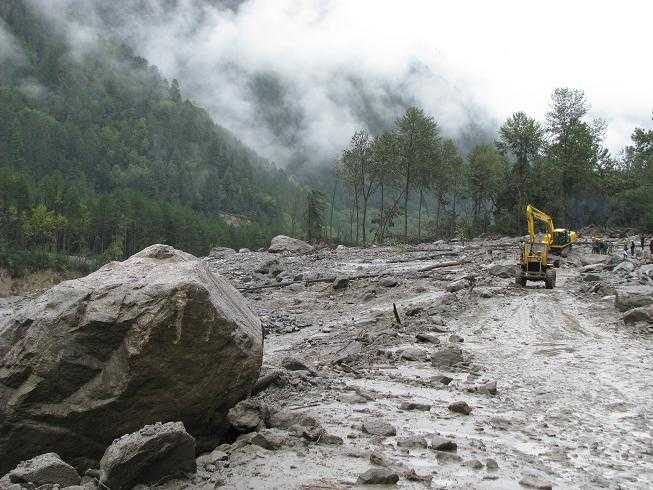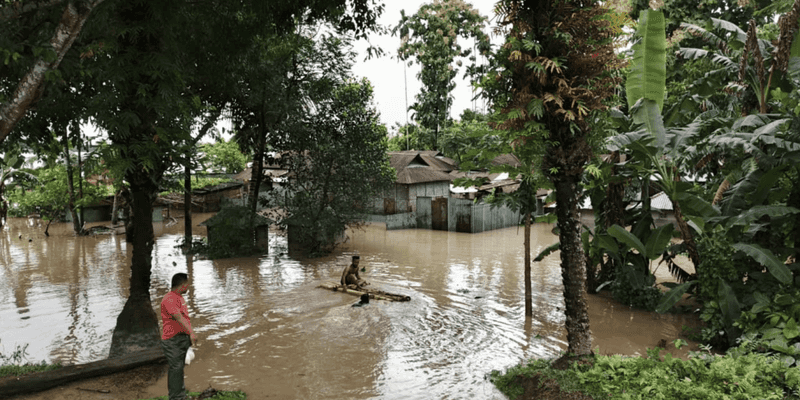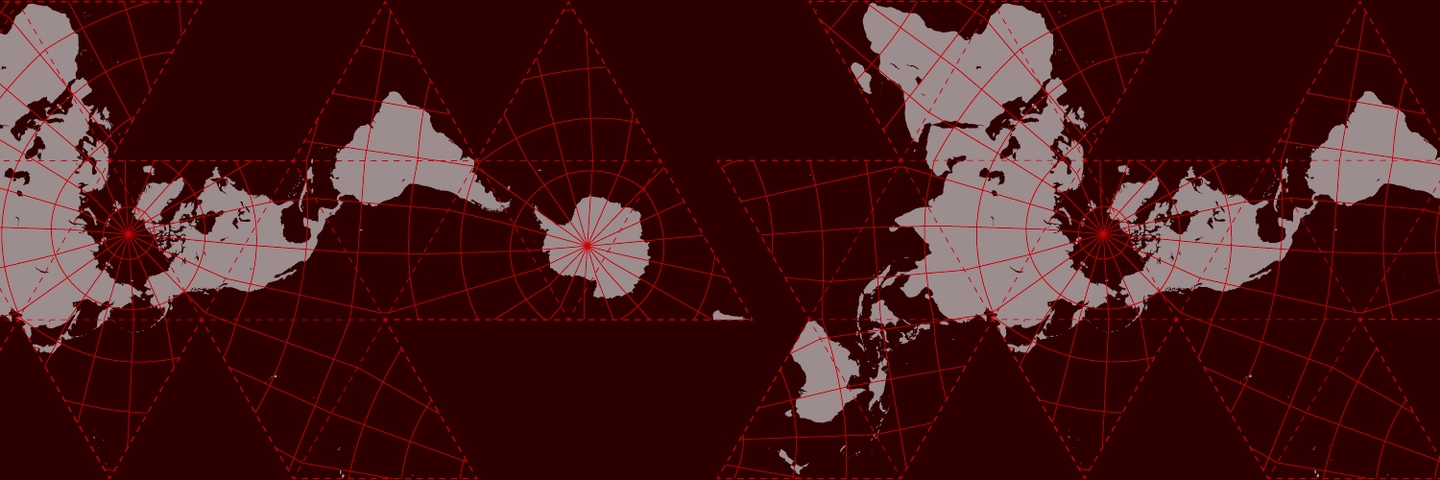
A world where lynx creep through tangled woods and children chase grasshoppers through humming meadows, where bison snort and stamp in the snow and cyclists pause to watch birds of prey wheeling overhead. A world where people welcome the wolf, the bear, and the vulture because they understand their importance to our flourishing natural systems. A world powered by wind and sun, with farmers paid to be wise custodians of the land, and communities supported to restore their forests and wetlands. A world whose beauty in rich nations is not built on the back of devastation abroad. We want to see an International Green New Deal that works to protect nature as well as avert the climate crisis, and which enhances the wellbeing of the many rather than enriching the few.
The biodiversity crisis — the decline in the number and variety of animals and plants, and damage to natural systems — is as real and dangerous as the climate crisis, but receives about an eighth of the media attention. This is not trivial; the destruction of natural systems is also undermining human societies. When natural systems are damaged we see worse floods and droughts, landslides, wildfires, diseases and other disasters. We cannot liveon a planet without natural systems to cycle water, provide oxygen, pollinate fruit, absorb carbon, grow fish, provide nutrients for our crops, and more.
In addition to the effects of accelerating climate change, nature is being damaged by habitat destruction, pollution, overexploitation, and the spread of invasive species. If we are to stop the hemorrhaging of nature, we must tackle these crises together. An International Green New Deal must ensure that climate solutions do not inadvertently worsen the biodiversity crisis, by actively conserving and restoring wild places and wildlife here in Europe and beyond.
Last year, the UN’s biodiversity report called for a “transformative change” in society to safeguard the natural systems upon which we depend. The International Green New Deal must reflect the magnitude of change recommended by this landmark report: to reduce consumption, address the impacts of international trade, and even alter our economy so that it does not prioritize endless economic growth.
We write this in the midst of the coronavirus pandemic, where people are suffering and dying due to a deadly disease which likely jumped from wild animals to people. Deforestation, trade in exotic animals, and high-density and chemical-intensive industrial agriculture for both crops and livestock made such a pandemic almost inevitable. As the normal patterns of society grind to a halt, we must use this sobering time to rethink how we tackle the interconnected planetary health crises we face.
Energy production
As we move away from fossil fuels, we need an honest reckoning as to which forms of energy are truly sustainable.All energy production- even the least carbon-intensive - has some impact on nature. The International Green New Deal must ensure we use the energy sources with the lowest impacton natural systems, located where they won’t harm vulnerable species and human and non-human communities, and that appropriate mitigation measures are taken to stop green energy projects from becoming wildlife graveyards.
If sited appropriately, solar and wind power have the lightest impacts on wildlife. Here in Europe, there is good news: we can generate energy from both. However, about two thirds of Europe’s “renewable” energy currently comes from biomass, often extracted from ancient forests rich in wildlife, both in Europe and elsewhere. Burning wood for energy is not carbon-neutral, and, as forests take a long time to regrow, puts us into a “carbon debt” that we can ill afford. Furthermore, bioenergy requires a lot of land — land that could otherwise be used for growing food or conserving nature.
Much of the biodiesel in European cars comes from palm oil plantations where rainforests home to orangutans and rhinos were felled and carbon-rich peat drained, meaning biodiesel can be three times more carbon intensive than regular diesel. Even algal biofuels are not a silver bullet: they require high energy input, and often pollute nearby streams and rivers.
An International Green New Deal should consider carefully which biofuels are truly green — such as those using industry waste — and those which are not. Rather than focus on“green” ways to run private cars, we must invest in electrifiable mass transport, along with electric and human powered bicycles. Pinning our hopes on “bio” energy will destroy forests while blowing green smoke in our faces.
Farming
Reducing the environmental impacts of farming, while maintaining an adequate and stable food supply and livelihood for farmers, will be one of the greatest challenges facing the Green New Deal — particularly here in Europe. The current EU Common Agricultural Policy has encouraged unnecessary habitat destruction and pesticide use, alongside steadily increasing field and farm size, heavy mechanization, and rural depopulation.
Study after study show that insect populations and diversity — vital to healthy ecosystems —are declining, and point the finger at pesticides. Meanwhile, paying farmers per hectare of land in “agricultural” condition— i.e. ensuring that the land, whether it is farmed or not, is purposefully maintained in a manner unsuitable as natural habitat — is terrible for wildlife, and locks in human inequality by paying richer farmers more.
The €60 billion per year Europe currently spends on farm subsidies could be used to train farmers in transitioning to low pesticide methods like integrated pest management (IPM), and to enforce pesticide reduction measures. Similarly, well-funded agri-environment schemes should ensure that all farmers implement effective measuresbased on solid science. Further, we need to rethink farming beyond the field; citizens should also be allowed land and taught to grow some of their own food. Imagine cities where parks, gardens, and cycle-side verges were stuffed with delicious fruits and veggies.
Thornier issues include what is farmed, and who gets to bend the ear of policymakers. Farming animals has huge environmental impacts in terms of greenhouse gas emissions, water use, pollution, wildlife destruction (much more land is needed to grow animal proteins than plant proteins, reducing land for natural habitats), and human health (as well as direct health problems from excess meat consumption, intensive farming can lead to diseases like swine flu jumping from livestock to humans, and to antibiotic resistance).
To remain within environmental limits of land use, biodiversity loss, pollution, and more, major changes are needed to Europe’s livestock farming. The hard truth is that whatever adjustments are made, the scale of the livestock industry will have to shrink significantly. Under a Green New Deal, farmers who transition away from livestock farming —perhaps towards growing plant proteins— must be well-supported. There must also be help for people to reduce their intake of animal products, an enormous cultural challenge which must be navigated sensitively.
A Green New Deal must also decide who has a seat at the table to decide agricultural policy. We know that powerful lobbies influence important decisions here in Europe; the pesticide lobby has prevented the ban on dangerous chemicals, and many members of the European Parliament on the agricultural committee benefit from agricultural subsidies. This maintains not just systemic ecological degradation, but also inequality:80% of subsidies go to the richest 20% of famers. Curtailing the lobbying activity of the big spenders, and bringing more small farmers, environmental scientists, NGOs, and local communities to the table seems like a good start.
Nature-based solutions
Protecting wildlife and natural systems via the Green New Deal can also help tackle the climate crisis.Nature-based solutions— harnessing the power of natural systems like forests to absorb carbon — could provide over a third of climate mitigation globally until 2030. Of course, this doesn’t replace the need to leave all remaining fossil fuels in the ground.
These natural systems include both plant and animal diversity.Beavers help reduce flash flooding, and provide a home for young fish.Wolves stop deer from eating whole forests. Whales make a significant contribution to carbon sequestration. Vultures eat dead animals, reducing the spread of disease. Bats provide crop protection, and brown bears spread seeds, clean up carcasses, and keep deer and moose numbers in check. Allowing European wildlife to return will bring challenges, but also multiple rewards.
The International Green New Deal should use science-led definitions for what can count as “nature-based”. The currentUN definition of a forest is an area greater than half a hectare, with trees at least five metres high and over 10% canopy cover. This includes tree farms that are terrible for wildlife and carbon storage, yet currently count towards restoration targets. A Green New Deal must look beyond simplistic measures such as “number of trees planted”, and recognize that nature’s interconnectedness and complexity is what gives it value and resilience.
Europe’s impact beyond our borders
The lawmakers in the European Commission are advancing the so-called ‘Green Deal’ that frames the transition away from fossil fuels as a way for Europe to gain a competitive advantage against the rest of the world — and export our dirty industries abroad. But the Green New Deal cannot stop at our borders; the regulations around environmental protection must be extended to products we import from abroad.
Trade deals should not allow environmental destruction or violation of workers’ rights. Sourcing food sustainably will be critical; currently, a sixth of all emissions from EU diets comes from tropical deforestation, with meat and palm oil driving about half of all forestloss. Another growing challenge will be applying strict environmental standards to the extraction of metals like lithium, currently essential to power electric cars. Mining for cobalt, nickel and lithium for batteries can cause local devastation, but demand is set to soar; Europe must demand better safeguards. A European Green New Deal also cannot be based around paying poorer nations to “offset” Europe’s emissions. We need to reduce our emissions within our own borders, not pay (or force) others to clean up our mess.
Transformative change
TheUN biodiversity report is clear that we need to transform our societies to stave off ecological collapse (and thus save our own skins). They say we need to reduce overall consumption, but also that we need to redistribute wealth more fairly. Currently, the richest 10% of people in the world emit 50% of the carbon and consume40% of the energy. Curbing the appetites of the wealthy is key to producing “safe environmental operating space” for humanity.
Implementing a Green New Deal that safeguards our climate, natural systems, and human rights will not be easy. Cultural shifts — like eating less meat, seeing wind turbines in fields, or allowing forests to re-wild and provide a home for wildlife — will need to be managed with sensitivity and support. But there are also great opportunities to live a good lifewithout constantly increasing material consumption. Could we value leisure time in vibrant forests and clean rivers more than cheap air travel and weekly steaks? Could cycling alongside fragrant roadside wildflower strips in urban areas become more pleasurable to us than breathing in exhaust fumes in a motor car? Would our communities be happier if wealth was shared?
We also need to reassess our relationship with nature. When we understand how completely we depend on natural systems, an “ecocide” law - making the destruction of nature a crime - seems vital. Such a law was considered by the UN over two decades ago; it could be revived and implemented in the International Green New Deal, along with laws giving rights to nature, as has been done in several states and countries.
Conclusion
There are many more ways that an International Green New Deal can safeguard biodiversity than we can address here. Suffice to say, any plan which wants to create a healthy environment for humans and nature — and which claims to be “green” — must scrupulously assess its impacts on biodiversity as well as the climate. Not all decisions will be easy, and trade-offs will have to be made. But we cannot carry on shifting problems on to other places, species and future generations. Here in Europe, it is time for us to take responsibility by implementing a New Deal that is truly fair, truly Green, and truly global.
With thanks to Dave Goulson and Laura Kehoe for their comments and suggestions.
Photo: Caleb Liaw



